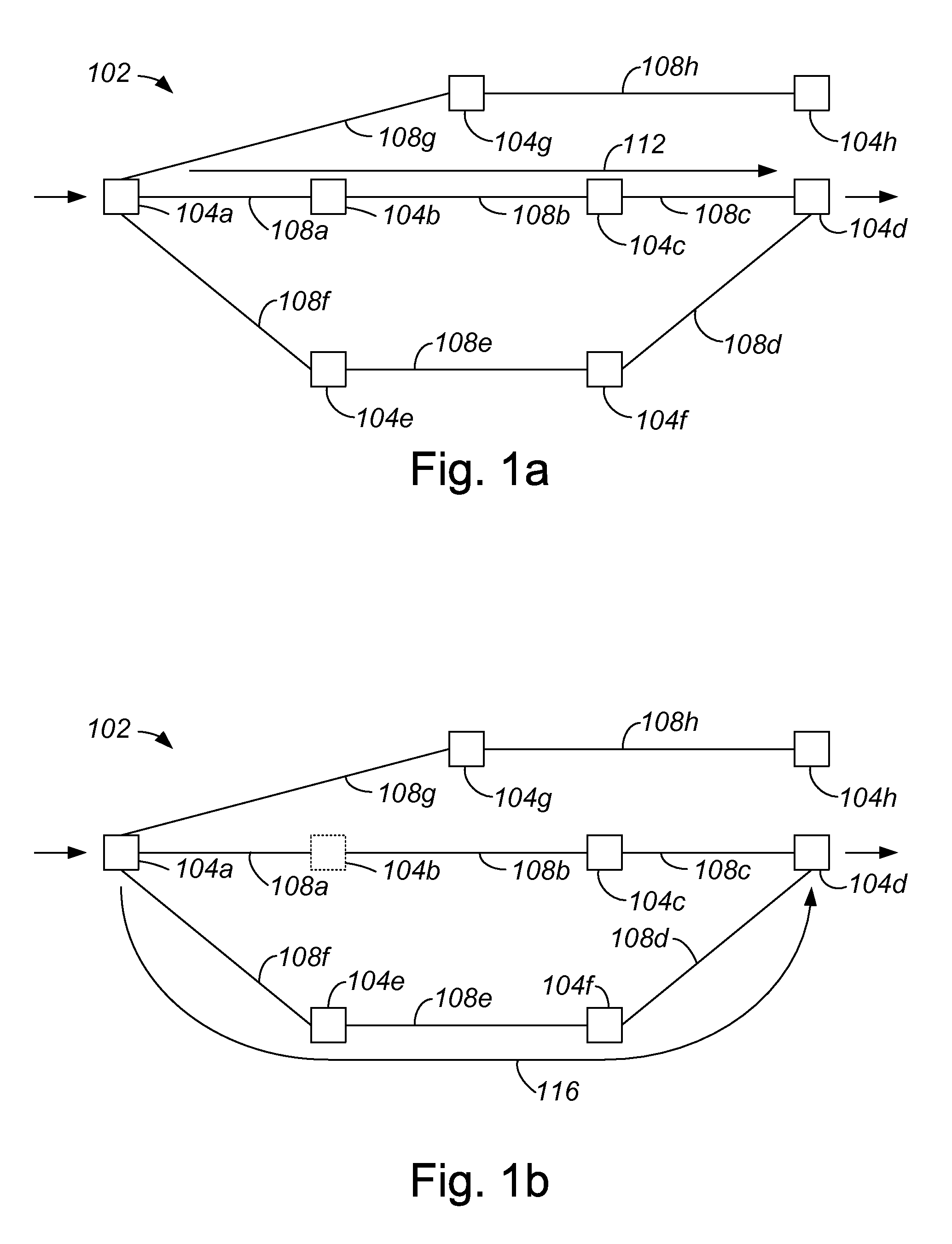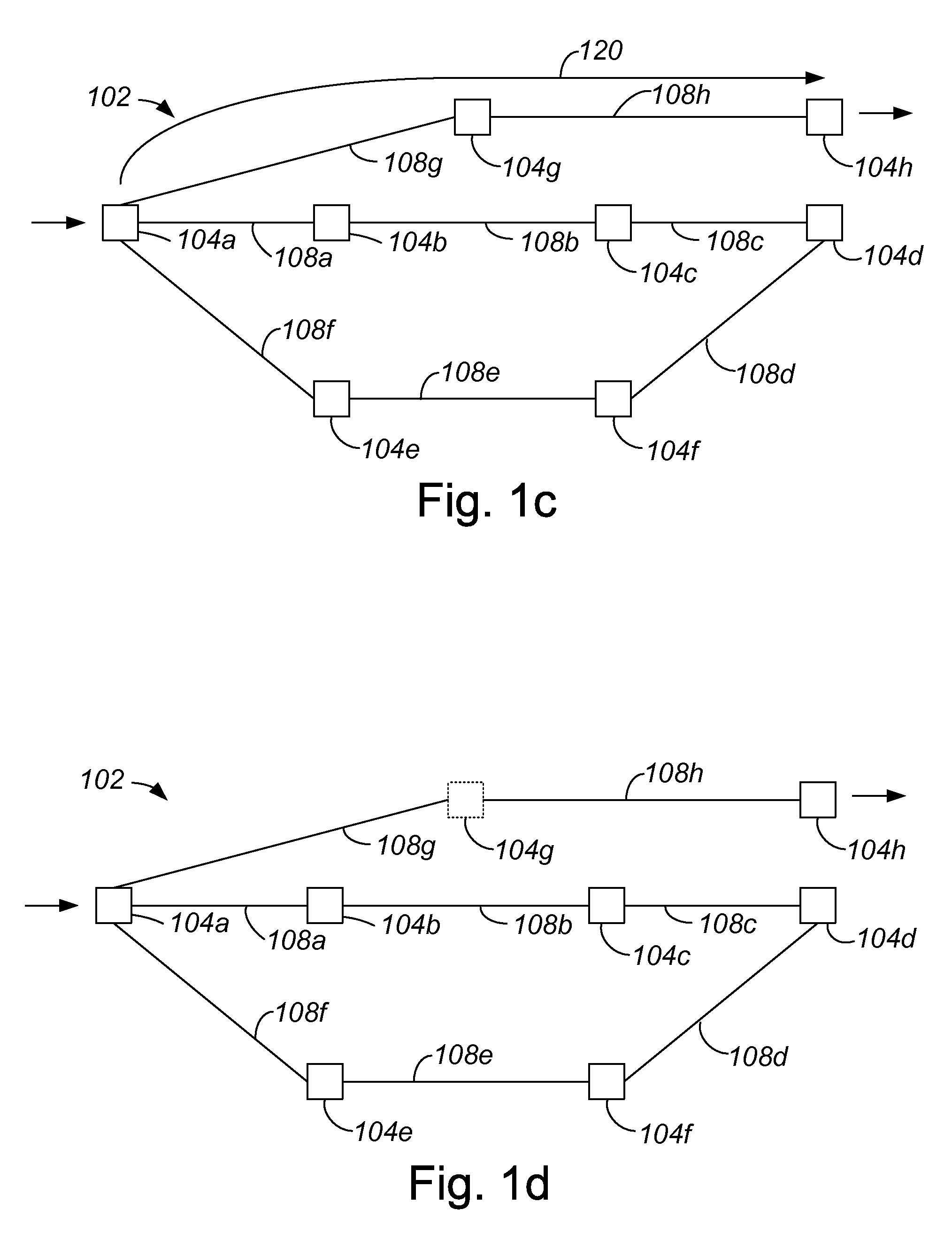Method and apparatus for computing a primary path while allowing for computing an alternate path by using a blocked list
- Summary
- Abstract
- Description
- Claims
- Application Information
AI Technical Summary
Benefits of technology
Problems solved by technology
Method used
Image
Examples
Embodiment Construction
[0031]Within a network such as a time division multiplexed (TDM) network which is subject to synchronous optical network (SONET) standards, creating an alternate path that corresponds to a primary path in order to provide protection for the primary path may be time-consuming, and may use a relatively significant amount of computational overhead. When the result of an attempt to create an alternate path is a determination that there is no possible alternate path that corresponds to a given primary path, then the computational overhead and the time associated with attempting to create the alternate path is essentially wasted, as is the computational overhead and the time spent in determining the primary path, since it may be necessary to identify a new primary path. After a new primary path is routed, another attempt may be made to create a corresponding alternate path. Repeatedly routing primary paths, and attempting to route corresponding alternate paths, is often relatively time-co...
PUM
 Login to View More
Login to View More Abstract
Description
Claims
Application Information
 Login to View More
Login to View More - R&D
- Intellectual Property
- Life Sciences
- Materials
- Tech Scout
- Unparalleled Data Quality
- Higher Quality Content
- 60% Fewer Hallucinations
Browse by: Latest US Patents, China's latest patents, Technical Efficacy Thesaurus, Application Domain, Technology Topic, Popular Technical Reports.
© 2025 PatSnap. All rights reserved.Legal|Privacy policy|Modern Slavery Act Transparency Statement|Sitemap|About US| Contact US: help@patsnap.com



